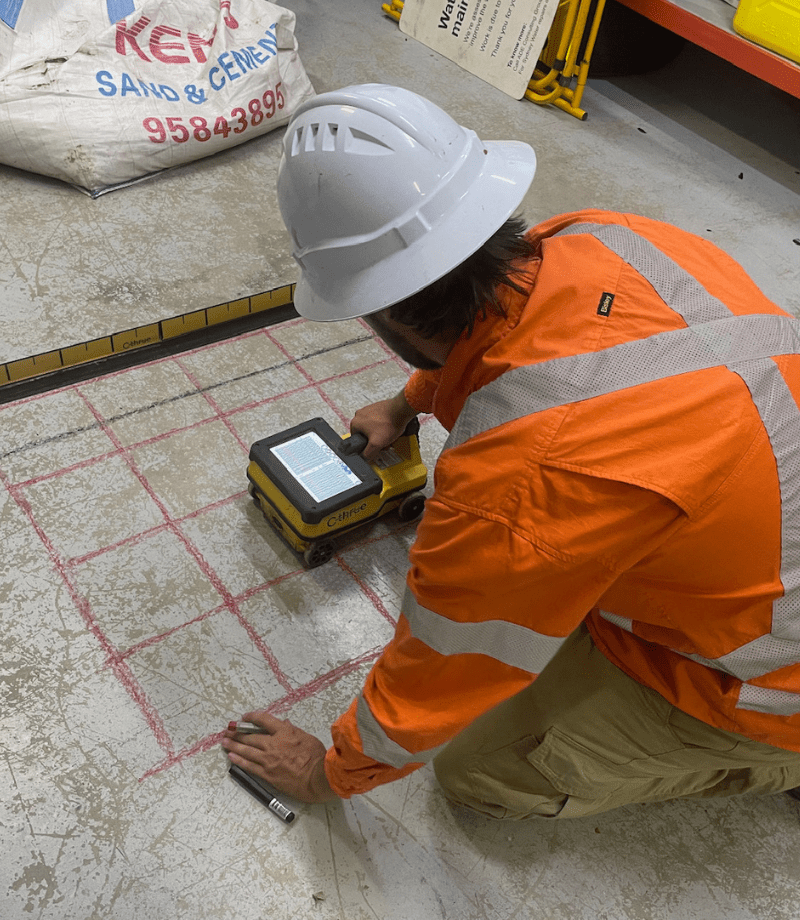Trick Advantages of Making Use Of Concrete Scanning Modern Technology
Trick Advantages of Making Use Of Concrete Scanning Modern Technology
Blog Article
Reveal the Transformative Power of Concrete Scanning in Making The Most Of Effectiveness and Security
Concrete scanning has arised as an important device in the building and construction market, using exceptional advantages in improving task performance and making sure safety and security requirements. The transformative power of concrete scanning exists in its capability to provide real-time data and in-depth insights, transforming exactly how jobs are prepared and implemented.
Relevance of Concrete Scanning
Making sure the architectural stability and safety and security of building tasks starts with the critical step of performing complete concrete scanning. Concrete scanning is a non-destructive method utilized to spot and map subsurface components within concrete structures.
Additionally, concrete scanning aids in maximizing task timelines and budget by avoiding unforeseen expenses and hold-ups that may emerge due to unanticipated blockages within the concrete. Eventually, spending in extensive concrete scanning is a proactive strategy that enhances both efficiency and safety in building projects.
How Concrete Scanning Works
Concrete scanning operates as an important device in building and construction projects by using innovative innovations to detect and map subsurface elements without creating architectural damage. Ground Passing Through Radar (GPR) and Electromagnetic Induction (EMI) are 2 main methods utilized in concrete scanning.
During the scanning process, the data collected is assessed in real-time, permitting prompt recognition of potential dangers or obstacles below the surface. This details aids in decision-making, guaranteeing that building activities proceed securely and effectively. Furthermore, 3D imaging software can be used to create topographic maps of the subsurface components, better boosting project preparation and implementation. By employing these innovative modern technologies, concrete scanning dramatically reduces the risk of costly problems and injuries on building and construction sites.
Benefits of Concrete Scanning
One of the primary benefits of concrete scanning is the capability to spot and situate embedded things such as rebar, post-tension cords, and channels accurately. Concrete scanning assists in planning and creating much more efficiently, as it offers precise info about the place and depth of architectural parts.

Study: Concrete Scanning Success

In one more instance, a building This Site firm made use of 3D concrete scanning to evaluate the condition of maturing concrete structures in a historical structure. The in-depth scans given important insights right into the extent of degeneration and aided prioritize maintenance efforts efficiently. By proactively attending to locations of concern determined with scanning, the firm was able to extend the life-span of the framework and ensure resident security.
These study highlight the transformative power of concrete scanning in improving performance, precision, and safety and security in building and construction tasks.
Carrying Out Concrete Scanning in Projects
Applying sophisticated scanning modern technologies throughout construction projects has come to be significantly important for improving precision and safety. By incorporating concrete scanning into job planning and execution, building teams can recognize possible hazards, such as rebar or post-tension cables, concealed within concrete frameworks. This positive strategy lessens the danger of accidents, delays, imp source and pricey rework, inevitably causing extra reliable job timelines and budgets.
To implement concrete scanning effectively, job managers ought to work together carefully with experienced scanning specialists to figure out one of the most appropriate scanning techniques for the specific task demands. Engaging scanning professionals from the onset of a task allows the group to produce extensive scanning plans that resolve crucial areas of concern and make certain detailed data collection.
Moreover, including concrete scanning into normal project operations can improve decision-making processes, as real-time check data gives instant understandings into the condition of concrete frameworks - Concrete Scanning. This data-driven method facilitates notified problem-solving and makes it possible for teams to make adjustments immediately, fostering a culture of performance and safety throughout the project lifecycle

Verdict
To conclude, concrete scanning try these out plays a crucial role in improving performance and safety in building tasks. By making use of advanced modern technology to map and identify out underlying frameworks within concrete, this process helps to avoid costly errors, make certain structural stability, and reduce dangers on website. With the capacity to discover surprise components and offer accurate information, concrete scanning proves to be a beneficial device for enhancing task results and taking full advantage of total success.
Concrete scanning is a non-destructive approach used to discover and map subsurface components within concrete frameworks. Additionally, concrete scanning assists in optimizing job timelines and budget plan by preventing unforeseen expenses and hold-ups that may occur due to unanticipated blockages within the concrete. One significant situation research study involves a large-scale improvement task where concrete scanning played an important function in guaranteeing project success.In an additional situation, a building business utilized 3D concrete scanning to examine the condition of maturing concrete structures in a historical structure. By incorporating concrete scanning into project preparation and implementation, construction teams can recognize potential hazards, such as rebar or post-tension wires, hidden within concrete frameworks.
Report this page